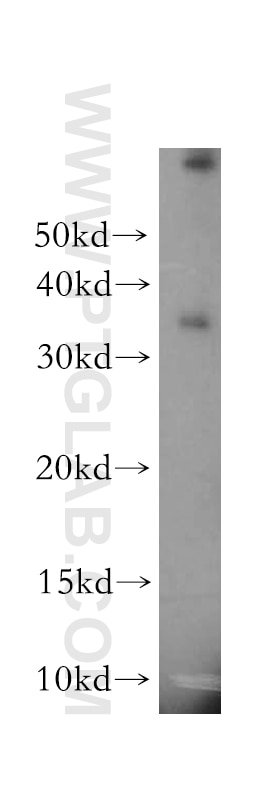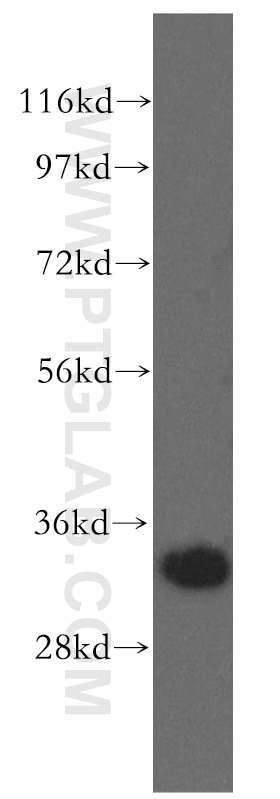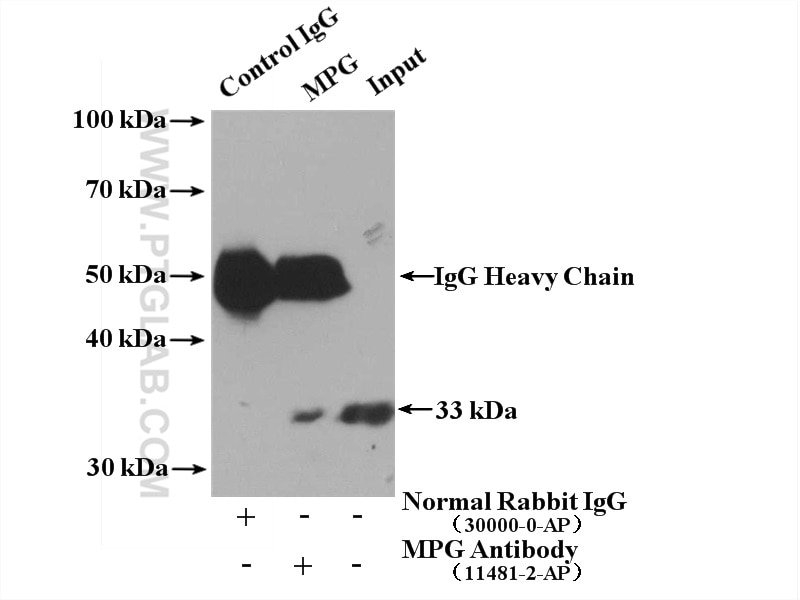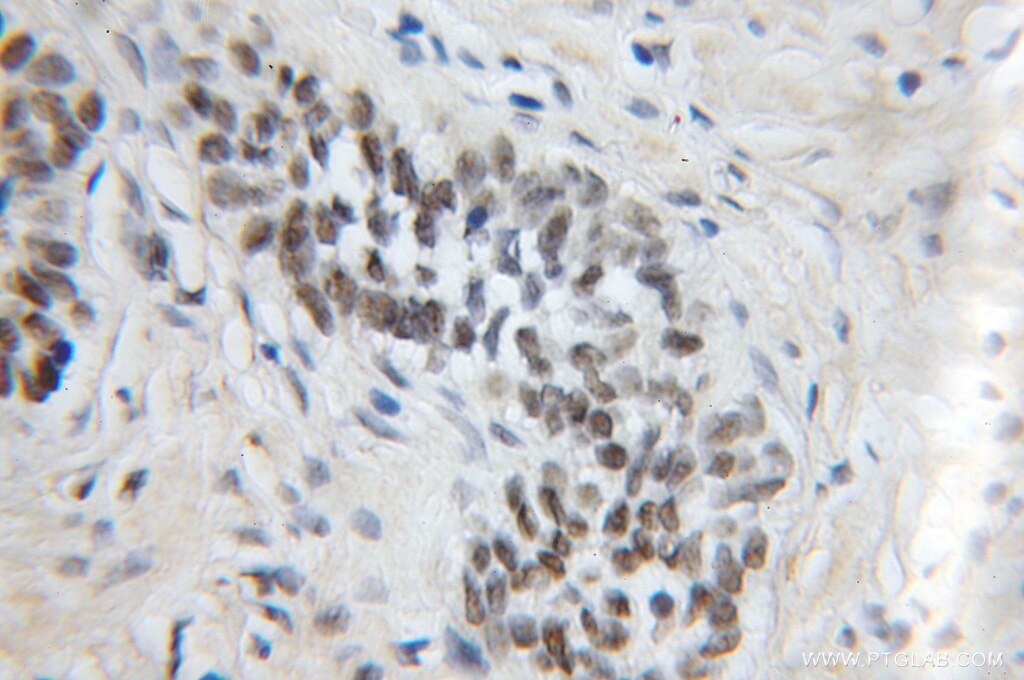MPG Polyklonaler Antikörper
MPG Polyklonal Antikörper für WB, IP, IHC, ELISA
Wirt / Isotyp
Kaninchen / IgG
Getestete Reaktivität
human, Maus, Ratte
Anwendung
WB, IP, IHC, ELISA
Konjugation
Unkonjugiert
Kat-Nr. : 11481-2-AP
Synonyme
Geprüfte Anwendungen
| Erfolgreiche Detektion in WB | HepG2-Zellen, Jurkat-Zellen, MCF-7-Zellen |
| Erfolgreiche IP | HepG2-Zellen |
| Erfolgreiche Detektion in IHC | humanes Prostatakarzinomgewebe Hinweis: Antigendemaskierung mit TE-Puffer pH 9,0 empfohlen. (*) Wahlweise kann die Antigendemaskierung auch mit Citratpuffer pH 6,0 erfolgen. |
Empfohlene Verdünnung
| Anwendung | Verdünnung |
|---|---|
| Western Blot (WB) | WB : 1:500-1:1000 |
| Immunpräzipitation (IP) | IP : 0.5-4.0 ug for 1.0-3.0 mg of total protein lysate |
| Immunhistochemie (IHC) | IHC : 1:20-1:200 |
| It is recommended that this reagent should be titrated in each testing system to obtain optimal results. | |
| Sample-dependent, check data in validation data gallery | |
Veröffentlichte Anwendungen
| WB | See 3 publications below |
Produktinformation
11481-2-AP bindet in WB, IP, IHC, ELISA MPG und zeigt Reaktivität mit human, Maus, Ratten
| Getestete Reaktivität | human, Maus, Ratte |
| In Publikationen genannte Reaktivität | human, Maus |
| Wirt / Isotyp | Kaninchen / IgG |
| Klonalität | Polyklonal |
| Typ | Antikörper |
| Immunogen | MPG fusion protein Ag2034 |
| Vollständiger Name | N-methylpurine-DNA glycosylase |
| Berechnetes Molekulargewicht | 293 aa, 32 kDa |
| Beobachtetes Molekulargewicht | 33 kDa |
| GenBank-Zugangsnummer | BC014991 |
| Gene symbol | MPG |
| Gene ID (NCBI) | 4350 |
| Konjugation | Unkonjugiert |
| Form | Liquid |
| Reinigungsmethode | Antigen-Affinitätsreinigung |
| Lagerungspuffer | PBS with 0.02% sodium azide and 50% glycerol |
| Lagerungsbedingungen | Bei -20°C lagern. Nach dem Versand ein Jahr lang stabil Aliquotieren ist bei -20oC Lagerung nicht notwendig. 20ul Größen enthalten 0,1% BSA. |
Hintergrundinformationen
N-methylpurine DNA glycosylase (MPG), an initiator glycosylase of the base excision repair (BER) pathway, typically repairs alkyl-induced DNA adducts, many of which are associated with genomic instability and tumorigenic risk [PMID:22801474] MPG initiates BER by removing TMZ-induced N3-methyladenine and N7-methylguanine base lesions, leaving abasic sites (AP sites) in DNA for further processing by BER [PMID:21377995]. MPG involves in modulating the genotoxic threshold response induced by the Sn2 alkylating agent ethyl methanesulfonate (EMS) [PMID:21071726].
Protokolle
| PRODUKTSPEZIFISCHE PROTOKOLLE | |
|---|---|
| WB protocol for MPG antibody 11481-2-AP | Protokoll herunterladen |
| IHC protocol for MPG antibody 11481-2-AP | Protokoll herunterladenl |
| IP protocol for MPG antibody 11481-2-AP | Protokoll herunterladen |
| STANDARD-PROTOKOLLE | |
|---|---|
| Klicken Sie hier, um unsere Standardprotokolle anzuzeigen |
Publikationen
| Species | Application | Title |
|---|---|---|
EMBO Rep LncRNA GUARDIN suppresses cellular senescence through a LRP130-PGC1α-FOXO4-p21-dependent signaling axis. | ||
J Oncol A Novel Pseudogene Methylation Signature to Predict Temozolomide Outcome in Non-G-CIMP Glioblastomas. | ||
J Radiat Res Abundance of BER-related proteins depends on cell proliferation status and the presence of DNA polymerase β. |







